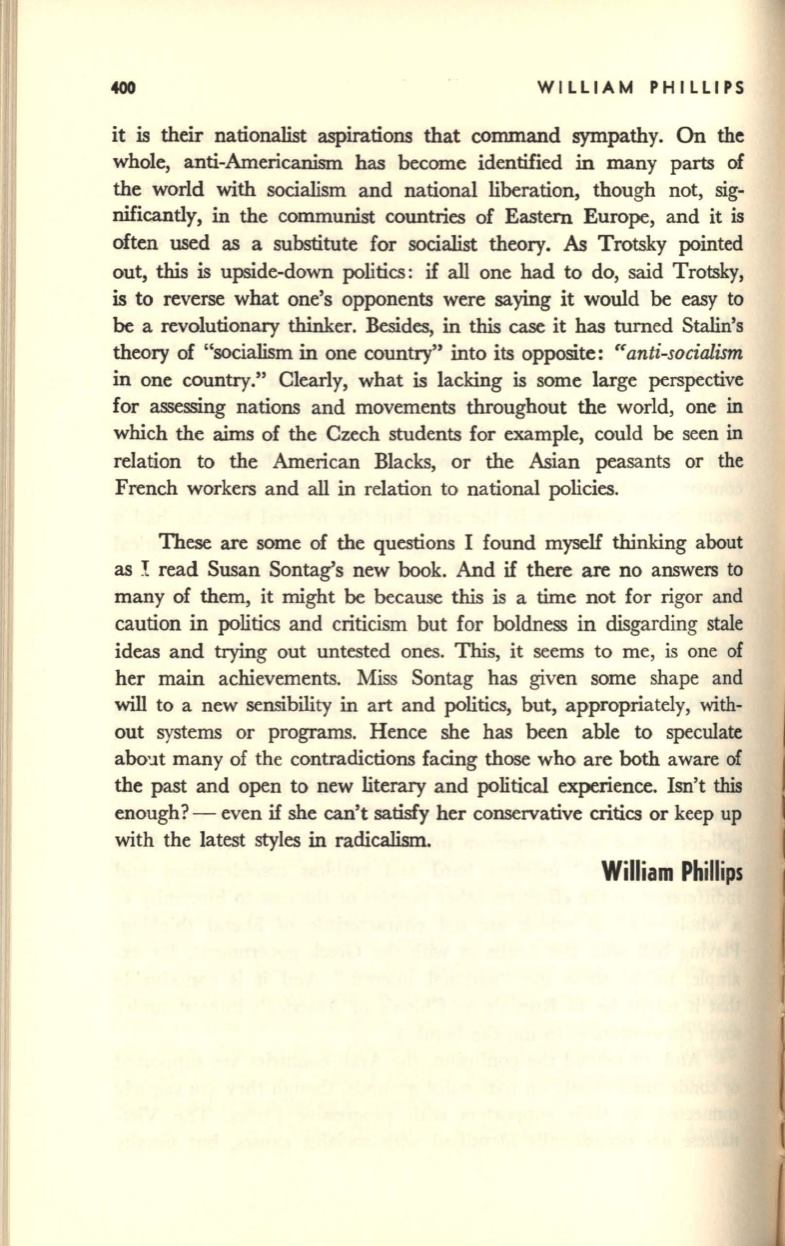
400
WILLIAM PHILLIPS
It
IS
their nationalist aspirations that command sympathy. On the
whole, anti-Americanism has become identified
in
many parts of
the world with socialism and national liberation, though not, sig–
nificantly, in the communist countries of Eastern Europe, and it
is
often used as a substitute for socialist theory.
As
Trotsky pointed
out, this
is
upside-down politics: if
all
one had to do, said Trotsky,
is
to reverse what one's opponents were saying it would be easy to
be
a revolutionary thinker. Besides, in
this
case it has turned Stalin's
theory of "socialism in one country" into its opposite:
U
anti-socialism
in one country." Clearly, what is lacking is some large perspective
for assessing nations and movements throughout the world, one
in
which the aims of the Czech students for example, could be seen
in
relation to the American Blacks, or the Asian peasants or the
French workers and all in relation to national policies.
These are some of the questions I found myself thinking about
as I read Susan Sontag's new
book.
And
if
there are no answers to
many of them, it might be because this
is
a time not for rigor and
caution in politics and criticism but for boldness in disgarding stale
ideas and trying out untested ones. This,
it
seems to me, is one of
her main achievements. Miss Sontag has given some shape and
will to a new sensibility in art and politics, but, appropriately,
with–
out systems or programs. Hence she has been able to speculate
abo:lt many of the contradictions facing those who are both aware of
the past and open to new literary and political experience. Isn't
this
enough? - even
if
she can't satisfy her conservative critics or keep up
with the latest styles in radicalism.
William Phillips


